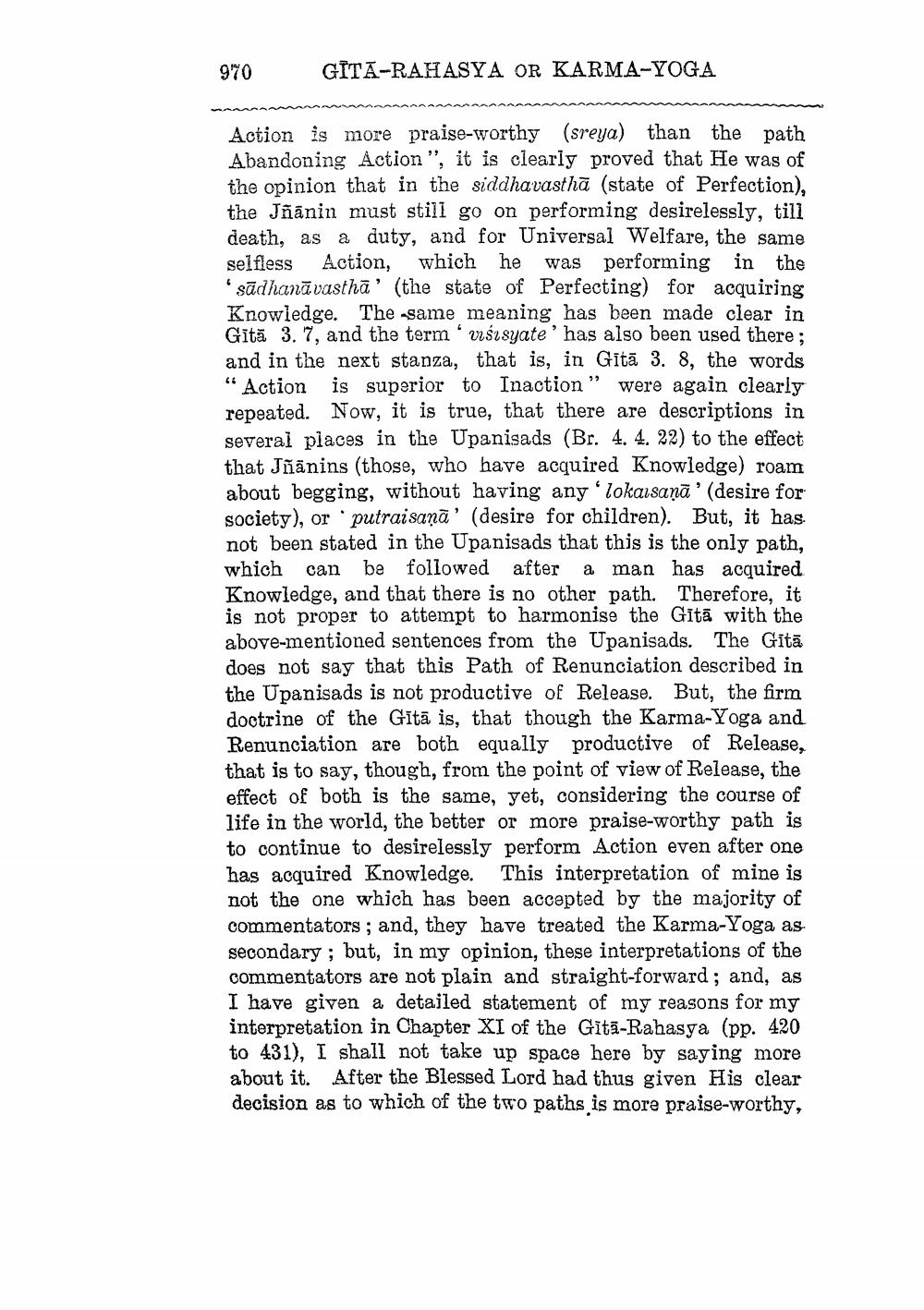________________
970
GITA-RAHASYA OR KARMA-YOGA
Action is more praise-worthy (sreya) than the path Abandoning Action", it is clearly proved that He was of the opinion that in the siddhavasthā (state of Perfection), the Jñanin must still go on performing desirelessly, till death, as a duty, and for Universal Welfare, the same selfless Action, which he was performing in the 'sādhanā vasthā' (the state of Perfecting) for acquiring Knowledge. The same meaning has been made clear in Gītā 3.7, and the term 'usisyate' has also been used there; and in the next stanza, that is, in Gītā 3. 8, the words " Action is superior to Inaction” were again clearly repeated. Now, it is true, that there are descriptions in several places in the Upanisads (Br. 4. 4. 22) to the effect that Jñānins (those, who have acquired Knowledge) roam about begging, without having any 'lokalsaņā' (desire for society), or putraisaņā' (desire for children). But, it has not been stated in the Upanisads that this is the only path, which can be followed after a man has acquired Knowledge, and that there is no other path. Therefore, it is not proper to attempt to harmonise the Gītā with the above-mentioned sentences from the Upanisads. The Gitā does not say that this path of Renunciation described in the Upanisads is not productive of Release. But, the firm doctrine of the Gītā is, that though the Karma-Yoga and Renunciation are both equally productive of Release, that is to say, though, from the point of view of Release, the effect of both is the same, yet, considering the course of life in the world, the better or more praise-worthy path is to continue to desirelessly perform Action even after one has acquired Knowledge. This interpretation of mine is not the one which has been accepted by the majority of commentators; and, they have treated the Karma-Yoga as. secondary ; but, in my opinion, these interpretations of the commentators are not plain and straight-forward; and, as I have given a detailed statement of my reasons for my interpretation in Chapter XI of the Gītā-Rahasya (pp. 420 to 431), I shall not take up space here by saying more about it. After the Blessed Lord had thus given His clear decision as to which of the two paths is more praise-worthy,




